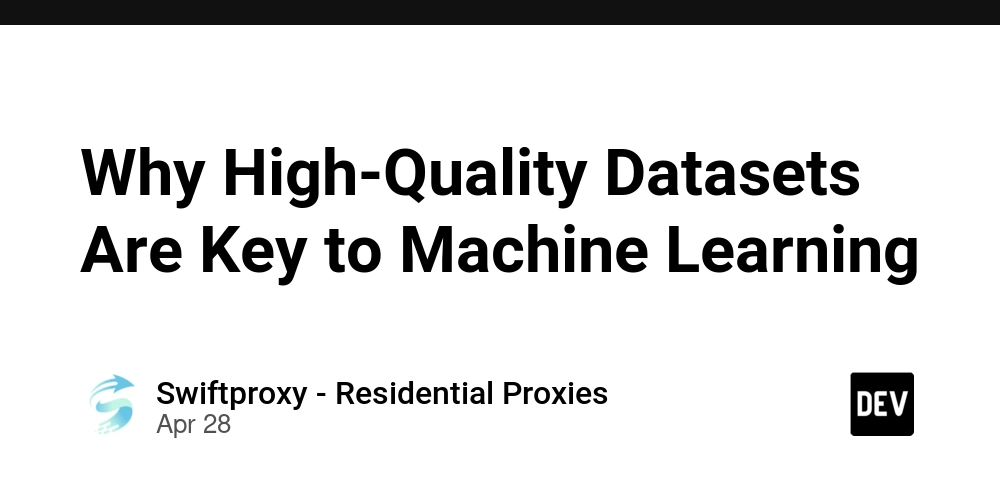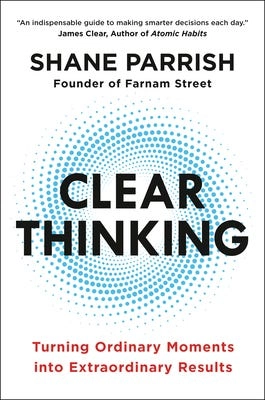Why High-Quality Datasets Are Key to Machine Learning
In the world of machine learning, data isn’t just important—it's everything. While fancy algorithms and advanced model architectures often take center stage, it’s the dataset—the raw fuel behind machine learning—that really drives performance. A high-quality dataset? It can turn an average AI model into a powerhouse. But without the right data, even the best algorithm will fall flat. As the demand for machine learning grows, so does the need for robust training data. Whether you’re building an NLP model, training a computer vision system, or fine-tuning a recommendation engine, access to clean, diverse data isn’t just a luxury—it’s essential. And that’s where things often get tricky. Finding high-quality, real-time, or niche-specific data isn’t always straightforward. But with the right tools, like proxy, you can source, scale, and structure your data without a hitch. The Basics of Dataset in Machine Learning Simply put, a dataset is a collection of data used to train, validate, and test machine learning models. Each data point, whether it's a sentence, an image, or a numerical value, serves as the foundation for the model’s learning process. The dataset is broken down into a few core elements: Features (Inputs): These are the raw data your model uses to make predictions—text, images, numbers, etc. Labels (Targets): The desired outcomes the model aims to predict—think sentiment labels, object categories, or numerical values. Metadata: This includes additional details, such as timestamps, source information, or geographic location. Datasets can be: Labeled (Supervised Learning): Every data point is tagged with the correct answer. Unlabeled (Unsupervised Learning): The model finds patterns without pre-set labels. Structured or Unstructured: Structured data is neat and organized in tables, while unstructured data (text, images, etc.) can be messy and complex. If you’re gathering data online, proxies help ensure you can scrape diverse and authentic data—without interruptions—perfect for training real-world models. Varieties of Machine Learning Datasets There’s no one-size-fits-all when it comes to datasets. Depending on the learning method and the problem you’re solving, the dataset’s structure will vary. Here’s a breakdown: Supervised Learning Datasets These include both inputs and labeled outputs. The goal is for the model to learn from the data and predict labels based on input. Examples: Sentiment-labeled reviews (text → positive/negative) Image classification (image → "cat" or "dog") Predicting customer churn (user activity → churned/not churned) Unsupervised Learning Datasets Here, the model analyzes unlabeled data to find hidden patterns or structures. Examples: Clustering customer behavior Topic modeling in large text corpora Dimensionality reduction of numeric data Reinforcement Learning Datasets This type involves sequences of actions, rewards, and states. The model learns through trial and error by interacting with an environment. Examples: AI learning strategies through game trials Robotics tasks (e.g., walking or grasping) Semi-Supervised and Self-Supervised Learning Semi-Supervised: A small labeled dataset with a large amount of unlabeled data. Self-Supervised: The model creates its own labels by finding patterns within the data, such as predicting missing words in a sentence. The Structure of a High-Quality AI Dataset Not all datasets are created equal. The quality of your dataset will dictate the success of your AI model. Here’s what you should look for: Relevance The data needs to be closely aligned with the problem you’re solving. A financial fraud detector doesn’t need healthcare data. Volume & Diversity The more data, the better. And diversity matters too. A broad variety of samples helps a model generalize well across different scenarios. Think: Variations in language (NLP models) Different visual contexts (computer vision) A range of demographics (personalization) Accuracy of Labels In supervised learning, bad labels mean bad predictions. If your data labels are inconsistent, your model will underperform. Cleanliness Dirty data—think duplicates, missing values, or irrelevant noise—will make your model less effective. Clean data is crucial for effective learning. Freshness In fast-moving domains (finance, news, eCommerce), stale data is worthless. Your dataset needs to reflect the current reality to remain valuable. Popular Datasets for Machine Learning Development If you're just starting, or need to benchmark your model, here are a few well-known datasets to explore: Image & Computer Vision MNIST (handwritten digits) CIFAR-10/100 (labeled images) ImageNet (large-scale vision tasks) Text & NLP IMDB (sentiment-labeled movie reviews) SQuAD (question answering) CoNLL-2003 (named entity recognition) Audio & Speech LibriSpeech (

In the world of machine learning, data isn’t just important—it's everything. While fancy algorithms and advanced model architectures often take center stage, it’s the dataset—the raw fuel behind machine learning—that really drives performance. A high-quality dataset? It can turn an average AI model into a powerhouse. But without the right data, even the best algorithm will fall flat.
As the demand for machine learning grows, so does the need for robust training data. Whether you’re building an NLP model, training a computer vision system, or fine-tuning a recommendation engine, access to clean, diverse data isn’t just a luxury—it’s essential. And that’s where things often get tricky. Finding high-quality, real-time, or niche-specific data isn’t always straightforward. But with the right tools, like proxy, you can source, scale, and structure your data without a hitch.
The Basics of Dataset in Machine Learning
Simply put, a dataset is a collection of data used to train, validate, and test machine learning models. Each data point, whether it's a sentence, an image, or a numerical value, serves as the foundation for the model’s learning process. The dataset is broken down into a few core elements:
- Features (Inputs): These are the raw data your model uses to make predictions—text, images, numbers, etc.
- Labels (Targets): The desired outcomes the model aims to predict—think sentiment labels, object categories, or numerical values.
- Metadata: This includes additional details, such as timestamps, source information, or geographic location.
Datasets can be:
- Labeled (Supervised Learning): Every data point is tagged with the correct answer.
- Unlabeled (Unsupervised Learning): The model finds patterns without pre-set labels.
- Structured or Unstructured: Structured data is neat and organized in tables, while unstructured data (text, images, etc.) can be messy and complex.
If you’re gathering data online, proxies help ensure you can scrape diverse and authentic data—without interruptions—perfect for training real-world models.
Varieties of Machine Learning Datasets
There’s no one-size-fits-all when it comes to datasets. Depending on the learning method and the problem you’re solving, the dataset’s structure will vary. Here’s a breakdown:
Supervised Learning Datasets
These include both inputs and labeled outputs. The goal is for the model to learn from the data and predict labels based on input.
Examples:
- Sentiment-labeled reviews (text → positive/negative)
- Image classification (image → "cat" or "dog")
- Predicting customer churn (user activity → churned/not churned)
Unsupervised Learning Datasets
Here, the model analyzes unlabeled data to find hidden patterns or structures.
Examples:
- Clustering customer behavior
- Topic modeling in large text corpora
- Dimensionality reduction of numeric data
Reinforcement Learning Datasets
This type involves sequences of actions, rewards, and states. The model learns through trial and error by interacting with an environment.
Examples:
- AI learning strategies through game trials
- Robotics tasks (e.g., walking or grasping)
Semi-Supervised and Self-Supervised Learning
- Semi-Supervised: A small labeled dataset with a large amount of unlabeled data.
- Self-Supervised: The model creates its own labels by finding patterns within the data, such as predicting missing words in a sentence.
The Structure of a High-Quality AI Dataset
Not all datasets are created equal. The quality of your dataset will dictate the success of your AI model. Here’s what you should look for:
Relevance
The data needs to be closely aligned with the problem you’re solving. A financial fraud detector doesn’t need healthcare data.Volume & Diversity
The more data, the better. And diversity matters too. A broad variety of samples helps a model generalize well across different scenarios.
Think:
Variations in language (NLP models)
Different visual contexts (computer vision)
A range of demographics (personalization)Accuracy of Labels
In supervised learning, bad labels mean bad predictions. If your data labels are inconsistent, your model will underperform.Cleanliness
Dirty data—think duplicates, missing values, or irrelevant noise—will make your model less effective. Clean data is crucial for effective learning.Freshness
In fast-moving domains (finance, news, eCommerce), stale data is worthless. Your dataset needs to reflect the current reality to remain valuable.
Popular Datasets for Machine Learning Development
If you're just starting, or need to benchmark your model, here are a few well-known datasets to explore:
Image & Computer Vision
- MNIST (handwritten digits)
- CIFAR-10/100 (labeled images)
- ImageNet (large-scale vision tasks)
Text & NLP
- IMDB (sentiment-labeled movie reviews)
- SQuAD (question answering)
- CoNLL-2003 (named entity recognition)
Audio & Speech
- LibriSpeech (audiobook recordings)
- Common Voice (multilingual voice dataset)
Structured & Tabular Data
- UCI Machine Learning Repository (regression, classification)
- Titanic Dataset (Kaggle)
- Credit Card Fraud Detection
While these datasets are great for research and learning, they might not fit your specific needs. That’s when you build your own.
Where to Access Machine Learning Datasets
If you're not building a dataset from scratch, there are plenty of places to find ready-made datasets:
Public Repositories
- Kaggle (thousands of datasets, plus notebooks)
- Hugging Face Datasets (for NLP tasks)
- UCI Machine Learning Repository (classic datasets)
Government & Open Data Portals
- Data.gov (USA)
- EU Open Data Portal
- World Bank Open Data (for economic, demographic data)
Web Scraping for Custom Datasets
When public datasets don’t cut it, custom web scraping can be a game-changer. Gather data from sources that matter to your business.
How to Build Custom AI Datasets with Web Scraping
Public datasets often fall short for niche, industry-specific, or real-time applications. That's when many teams turn to web scraping for custom data.
Why build your own dataset
- Existing datasets are outdated or irrelevant.
- You need data from a niche or underrepresented industry.
- You want data reflecting your specific users, not a generic audience.
- Real-time use cases require fresh, current data.
Data Sources to Scrape:
- News sites for NLP summarization
- Social media for opinion mining
- eCommerce platforms for product data
- Legal or financial websites for industry-specific data
Scraping Tools:
- Scrapy
- Playwright/Puppeteer
- BeautifulSoup
How to Structure and Format ML Datasets
Once your data is collected, it needs to be structured for machine learning use. Popular formats include:
- CSV/TSV: Great for tabular data.
- JSON: Ideal for NLP tasks.
- Parquet: Efficient for large-scale storage.
- TFRecords: Optimized for TensorFlow.
How to Avoid Common Dataset Issues
A poor dataset can ruin your model. Here’s how to avoid common mistakes:
Dataset Bias
Lack of diversity in your data leads to biased models.
Solution: Use geo-targeted proxies to gather a more representative dataset.Overfitting
A small, repetitive dataset causes your model to memorize rather than generalize.
Solution: Scale up your data collection using rotating proxies.Low-Quality Labels
Inconsistent labeling can derail model performance.
Solution: Use clear guidelines and reliable annotation tools.Incomplete or Blocked Data
Scraping errors can leave you with incomplete or misleading data.
Solution: Use proxies to avoid blocking and ensure full-page loads.Data Leakage
Mixing test and training data leads to misleading results.
Solution: Keep your datasets separated—strictly.
How Datasets Impact AI Model Performance
The dataset is often the unsung hero of machine learning. You can have the best algorithm in the world, but if the data isn’t right, your model will fall flat.
Why does the dataset matter more than you think
- Garbage In, Garbage Out: Even the best algorithm can’t make sense of bad data.
- Real-World Generalization: A well-rounded dataset makes your model adaptable in the real world.
- Bias & Fairness: Diverse datasets reduce bias and improve fairness in AI models.
Your model is only as good as the data you feed it. If you want to train AI systems that are reliable, adaptable, and production-ready, you need to ensure you have access to clean, scalable, and diverse data. And that's exactly where proxy can help.
Final Thoughts
In machine learning, data isn’t just the starting point—it’s the secret weapon. A clean, diverse, and well-structured dataset can mean the difference between a model that barely functions and one that truly leads the way. If you want your AI to thrive in the real world, invest in better data. Build it carefully, source it wisely, and protect the pipeline that delivers it. The future of your AI doesn’t just depend on algorithms—it depends on the data you feed them.








![[Research] Starting Web App in 2025: Vibe-coding, AI Agents….](https://media2.dev.to/dynamic/image/width%3D1000,height%3D500,fit%3Dcover,gravity%3Dauto,format%3Dauto/https:%2F%2Fdev-to-uploads.s3.amazonaws.com%2Fuploads%2Farticles%2Fby8z0auultdpyfrx5tx8.png)













-RTAガチ勢がSwitch2体験会でゼルダのラスボスを撃破して世界初のEDを流してしまう...【ゼルダの伝説ブレスオブザワイルドSwitch2-Edition】-00-06-05.png?width=1920&height=1920&fit=bounds&quality=70&format=jpg&auto=webp#)














































